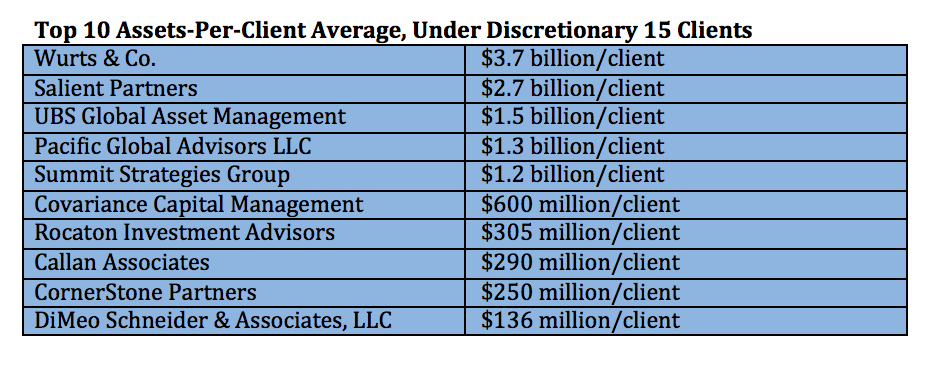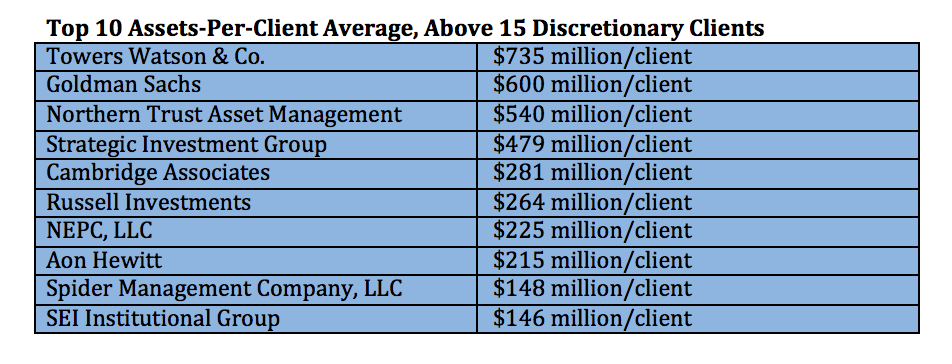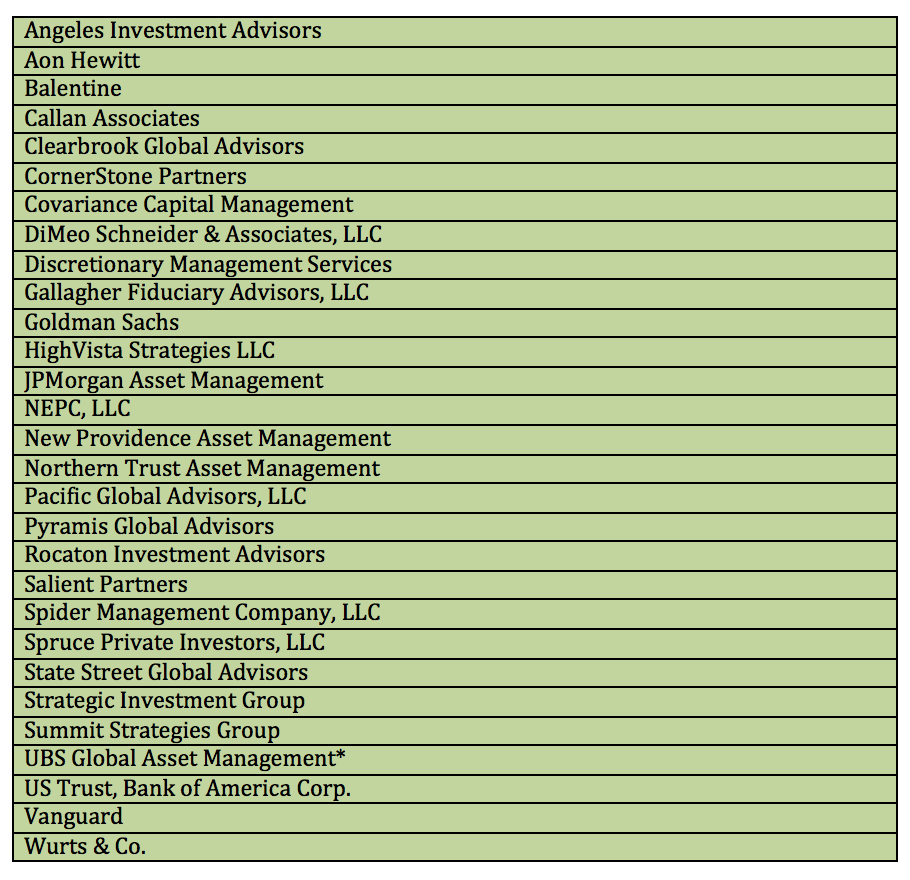(February 19, 2014) — Russell Investments, Mercer, and SEI are
the largest outsourced-CIO providers—but a group of less established OCIOs is marching
up the league tables in mandate size, total client numbers, and transparency.
In the US, which is arguably the largest market in this
field, aiCIO’s 2014 OCIO Buyer’s Guide shows these up-and-comers include Jeff Scott’s Wurts & Co. and Lee
Partridge’s Salient Partners, which lead the industry in average
assets-per-client for firms with fewer than 15 clients. However, it is establishment-player
Towers Watson & Co. that leads this category for OCIOs with more than 15
clients.
Another example: While it is hardly lacking in establishment
credentials, US Trust, Bank of America Corp. leads the industry in total client
numbers. However, when a minimum mandate is applied—in an effort to show who
rules the large-market segment—US Trust disappears from the running leaving SEI
claiming the most clients.
Transparency, however, seems to be
a young firm’s game. Of the 37 firms that participated in this year’s guide,
six were rated as lagging or only neutral regarding the transparency of their
business, based on the level of supplied data. Of those six, however, 40% were
among the 10 largest OCIO firms in the business, as measured by total
discretionary assets.
For access to the full interactive Buyer’s Guide, click here.
The Largest: Total Discretionary Assets and Client
Numbers
Familiar names sit atop the OCIO total discretionary assets
league table. Following the top three of Russell, Mercer, and SEI, Northern
Trust Asset Management ($42.1 billion), Aon Hewitt ($28.6 billion), and
Strategic Investment Group ($23 billion) and Hirtle, Callaghan & Co. ($23
billion) round out the top seven. [Note: To accurately reflect the large market OCIO segment, firms must have an average of $50 million per client to qualify for this league table.]

When measured by total clients, however, a number of new
names populate the top 10.
US Trust, Bank of America Corp. claims the most clients at
537, despite not being among the top 10 in total discretionary assets;
HighVista Strategies (254), Balentine (205), and Vanguard (181) also move into
the top 10. Such figures, however, suggest that these four OCIOs serve the
smaller end of the market—a market largely ignored by most major players in
favor of larger client mandates.

When minimum mandates are considered, more established OCIO
players once again rise to the top. When a $25 million minimum mandate is
considered, SEI, Russell, and JPMorgan lead the total-client table; other firms
with significant client figures include Strategic Investment Group, Cambridge
Associates, and Goldman Sachs, among others.

*While Towers Watson has no official minimum, the firm
claims that “a minimum annual fee may preclude interest from funds
<$75million.”
[For transparency leader and laggard tables, see the following page.]
The Largest: Assets-per-Client Average
Rated by assets-per-client (for firms with fewer than 15
clients), two relatively new firms—Jeff Scott’s Wurts & Co. and Lee
Partridge’s Salient Partners—benefit from having a small number of very large
clients.
With three discretionary clients totaling $11 billion, Wurts
tops the charts of assets-per-client; Salient, whose most famous client is the
San Diego County Employees’ Retirement System, comes in second at $2.7
billion/client. Charles Service’s UBS Global Asset Management and David Oaten’s
Pacific Global Advisors come in third and fourth, followed by Summit Strategies
Group.

When firms with more than 15 clients are considered, Towers
Watson—only seventh in terms of total assets under discretion—fairs better when
measured by average mandate size.
With an average of $735 million per client, Towers Watson leads
Goldman Sachs ($600 million), Northern Trust Asset Management ($540 million),
and Strategic Investment Group ($479 million).
Firms making the top 10 of total discretionary assets that
fall off the list when client size is considered include Mercer, Hirtle
Callaghan, and JP Morgan Asset Management.

Transparency: Leaders and Laggards
Based on the self-reporting of their business’ breakdown,
there is a diversity of transparency offered by OCIOs in the Buyer’s Guide.
Hirtle Callaghan & Co., Mercer, and SEI are the
transparency laggards among respondents. All three failed to provide granular
data on their client type or regional breakdowns, choosing to only show total
discretionary assets and client numbers.
Cambridge Associates, Fund Evaluation Group, LLC, and
Russell Investments occupy the transparency middle ground. While they provided
total discretionary assets and client numbers, they only provided client-type
breakdown or regional breakdown—not both. Cambridge Associates failed to break
down its businesses regionally; Fund Evaluation Group failed to break down
their business by client type; Russell did not elucidate their regional
breakdown, and only provided client-type figures for the ”corporate pension fund”
and ”other” categories.
The remaining respondents—including top 10 firms (by assets)
Northern Trust, Aon Hewitt, Strategic Investment Group, Towers Watson, Goldman
Sachs, and JP Morgan Asset Management—provided full transparency for the
buyers’ guide.
Transparency Laggards
Members of the
Transparency Laggards group failed to provide both client-type and regional
breakdowns.

Transparency Neutrals
Members of the
Transparency Neutrals group failed to provide one of the following: client-type
breakdown, or regional breakdown.

Transparency Leaders
Members of the
Transparency Leaders group provided total transparency.

*UBS provided regional data after the print edition
deadline. All their clients are based in the US.








